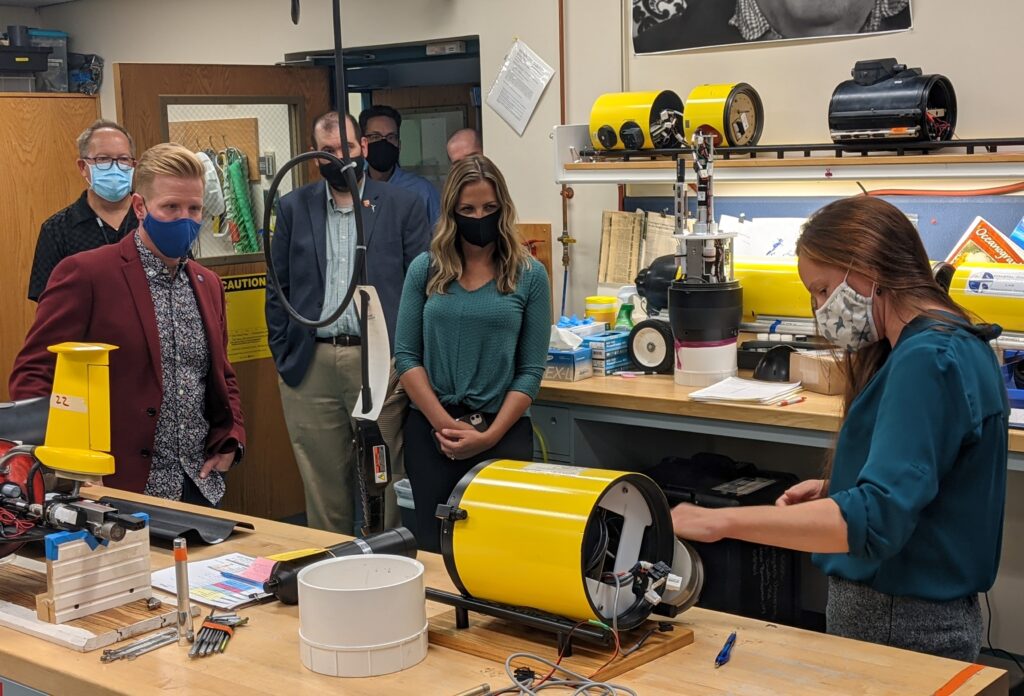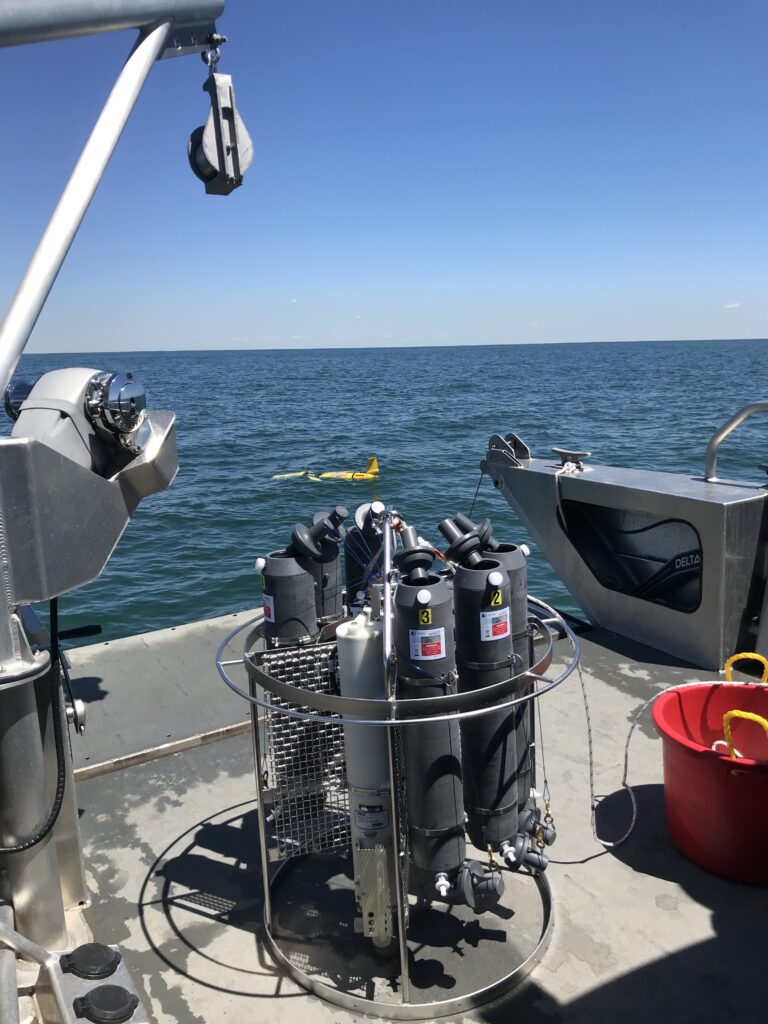An ecological and oceanographic baseline to inform offshore wind development over the continental shelf off the coast of New Jersey

Grace Saba

Josh Kohut

Grace Saba describes how autonomous underwater gliders operate in the coastal ocean to staff from the New Jersey Department of Environmental Protection (including Commissioner Shawn LaTourette). Photo credit: Michael Smith, Rutgers University
Project Description

The New Jersey Department of Environmental Protection (DEP) and New Jersey Board of Public Utilities (BPU) awarded $2.5 million to Rutgers University Center for Ocean Observing Leadership to fully support a New Jersey statewide ‘eco-glider’ program that will provide seasonal resolution data for a large range of parameters, including physical and chemical variables, and biological variables spanning from phytoplankton and zooplankton to pelagic fish and marine mammals. These efforts will enhanced scientific information on the impacts of offshore wind energy development off New Jersey’s coastline. As part of the project, a seasonal baseline survey will be conducted in the New Jersey coastal shelf from Sandy Hook to Atlantic City using a pair of gliders deployed in each season over two years, with a full complement of sensors to simultaneously map oceanographic and ecological variables. In addition to the paired seasonal missions, a third glider will be deployed three times each year to fill coverage gaps in the seasonal glider deployments from the onset of seasonal stratification associated with the Spring formation and Fall physical breakdown of the Cold Pool, a cold subsurface water mass seasonally present along the New Jersey shelf. Sensors on the gliders will enable measurements of temperature, salinity, ocean stratification, seawater pH for ocean acidification applications, optical properties including phytoplankton concentration, dissolved oxygen concentration, biomass of zooplankton and pelagic fishes, and the presence of marine mammals.
This monitoring strategy increases the ability to characterize the true variability of the system throughout a year, which can then be used as a baseline to observe potential impacts of offshore wind development and operation and/or compare to observations of future environmental and biological fluctuations and long-term changes in New Jersey’s coastal system. Graduate students in the Masters in Operational Oceanography program at Rutgers will analyze the oceanographic and ecological datasets provided by this glider monitoring program to develop data products and conduct hypothesis-driven research. The data will allow scientists to explore overlaps between oceanographic features and distribution of fishes and marine mammals and between marine mammal predators and their prey – in and around existing and planned wind energy lease areas – that will enhance the ability to predict where and when important species may occur in New Jersey coastal waters. Additionally, the co-location of biological and chemical measurements obtained through this program will provide insight into how organisms respond to environmental stressors, such as ocean acidification or hypoxia, in their natural habitats.

